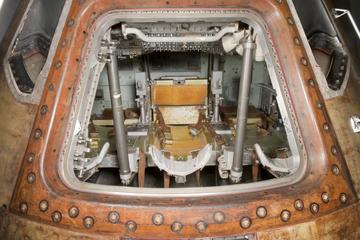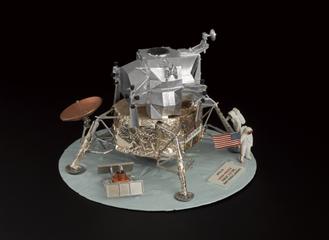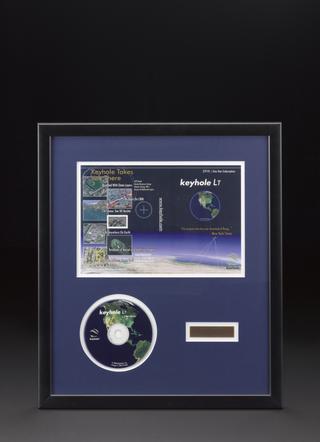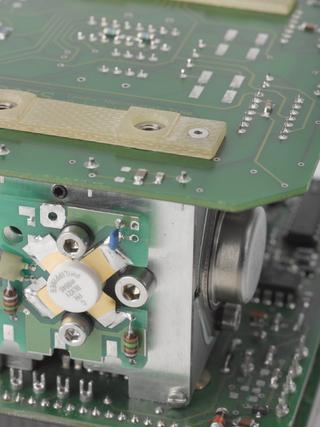
Asteroid sample collected by Hayabusa2
- Made:
- 2021








Grain sample collected from the asteroid Ryugu by the Japan Aerospace Exploration Agency (JAXA) Hayabusa2 mission. The grain is stored inside a FFTC (Facility-to-Facility Transfer Container).
This tiny grain of rock is 4.6 billion years old; around the same age as Earth. It was collected by JAXA's Hayabusa2, a robotic asteroid exploration spacecraft.
Hayabusa2 launched in 2014, embarking on a mission to collect samples of the asteroid Ryugu and return them to Earth for analysis. In total, 5.4g of matter was collected from the asteroid Ryugu - equal in mass to about 5 paperclips. Hayabusa2 travelled billions of kilometres to obtain these samples and bring them back, parachuting the canister down to Earth in 2020.
Asteroid sample return missions are incredibly complex, made possible by cutting edge technological advancements, but the scientific potential of the samples collected is huge. Pieces of asteroids sometimes fall to Earth as meteorites but are contaminated by the Earth’s environment, limiting what we can learn from them. Because this sample was sealed in a sterile canister, it reveals the pristine chemcial make-up of Ryugu. This means that when scientists find something interesting in the sample, they know it came from the asteroid. The asteroid Ryugu was chosen for its age and high carbon content, in the hopes that it would contain clues about the formation of the Solar System and maybe even the origins of life on Earth.
After being delivered to Earth, the samples were catalogued in sterile conditions at a JAXA curation facility. Many were then sent out to labs around the world for analysis. Already, ground-breaking discoveries have been made. Scientists found the samples contained uracil and niacin, two molecules crucial for life. Uracil is one of the building blocks of RNA, found in all living cells, and niacin is a B vitamin, required for converting nutrients into energy. Fluid water was also found within the rock. Could these findings be pieces of the puzzle of the origins of life on Earth?
Details
- Category:
- Space Technology
- Object Number:
- L2023-26
- Materials:
- stainless steel, quartz glass and viton
- Measurements:
-
overall: 50 mm 60 mm,
- type:
- sample
- credit:
- Lent by JAXA ISAS




